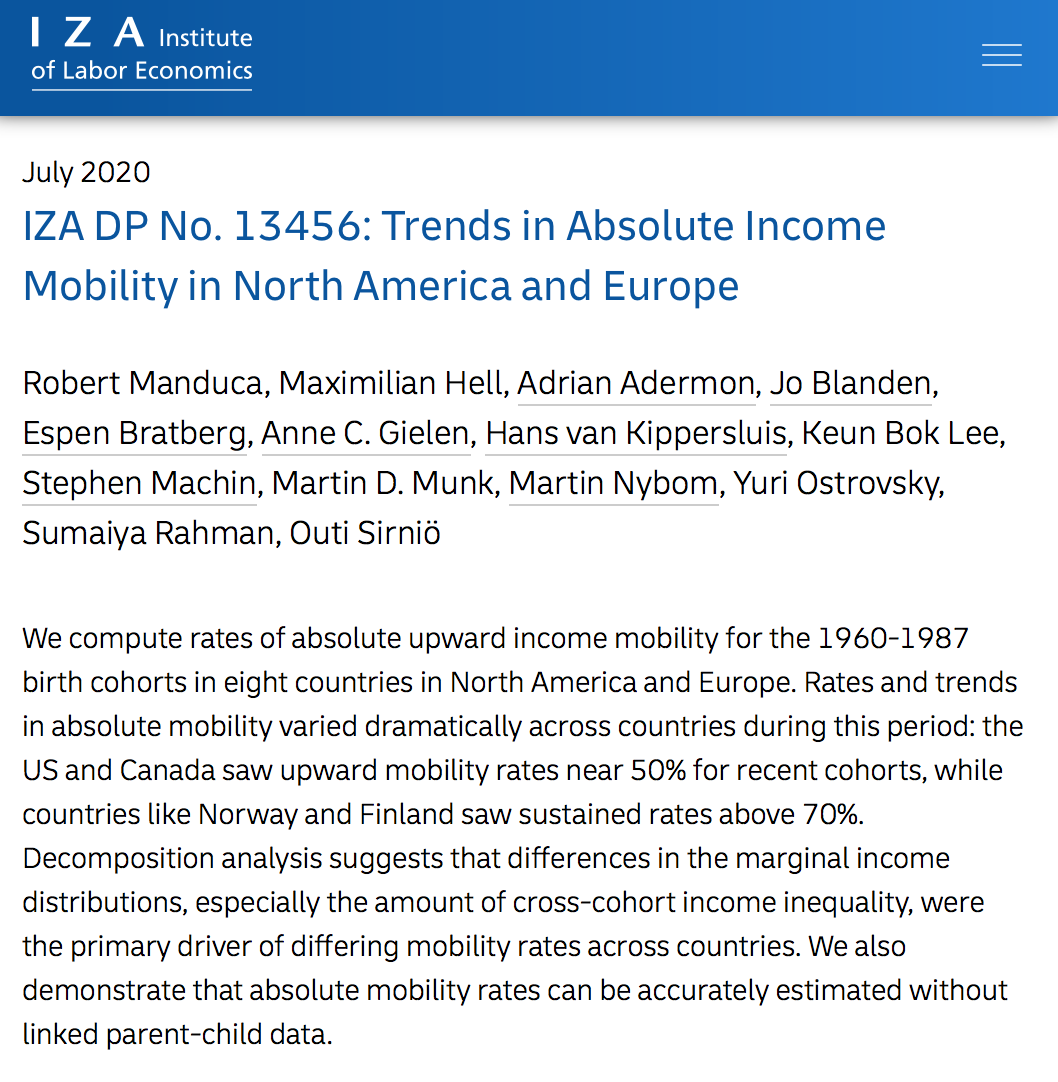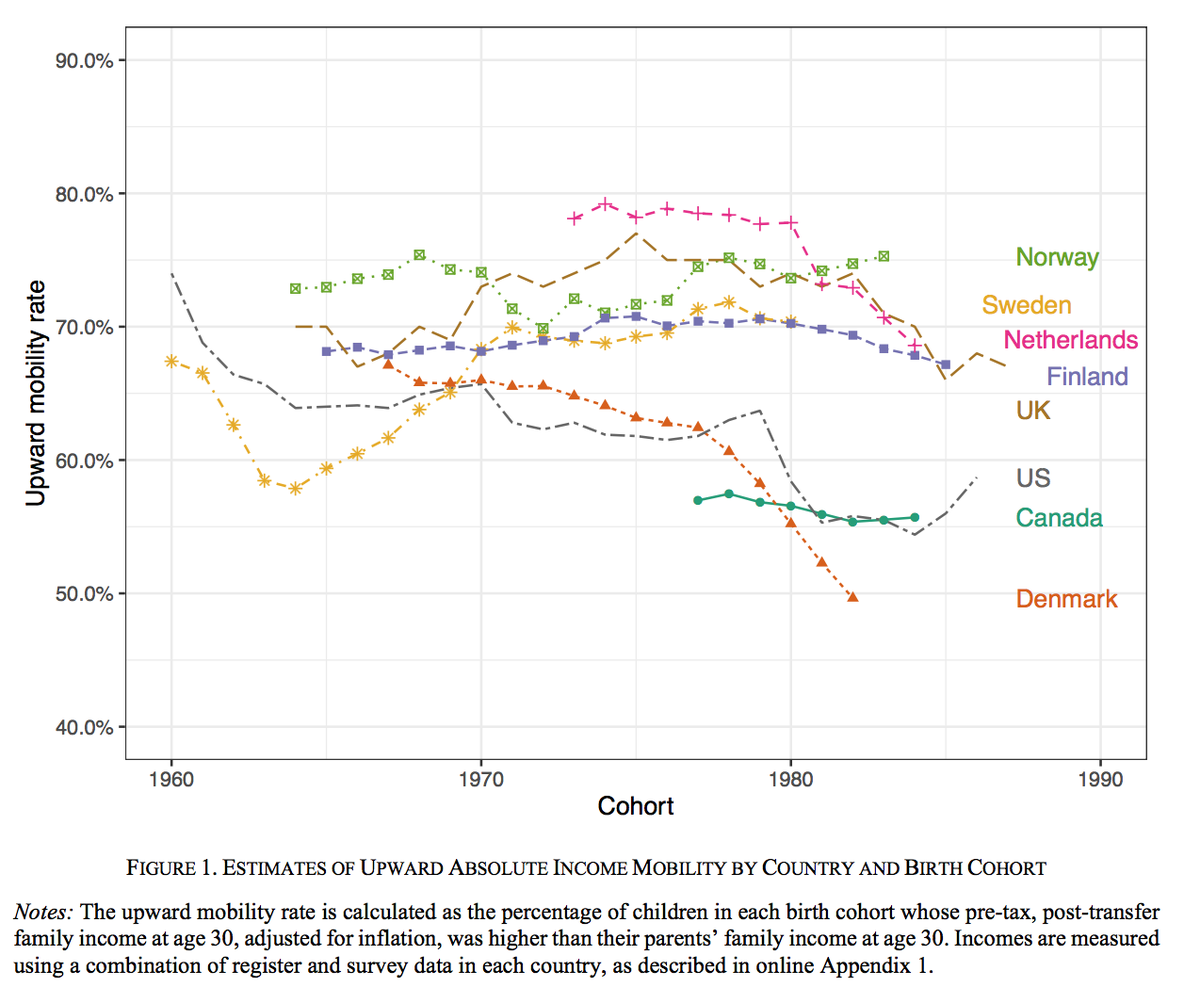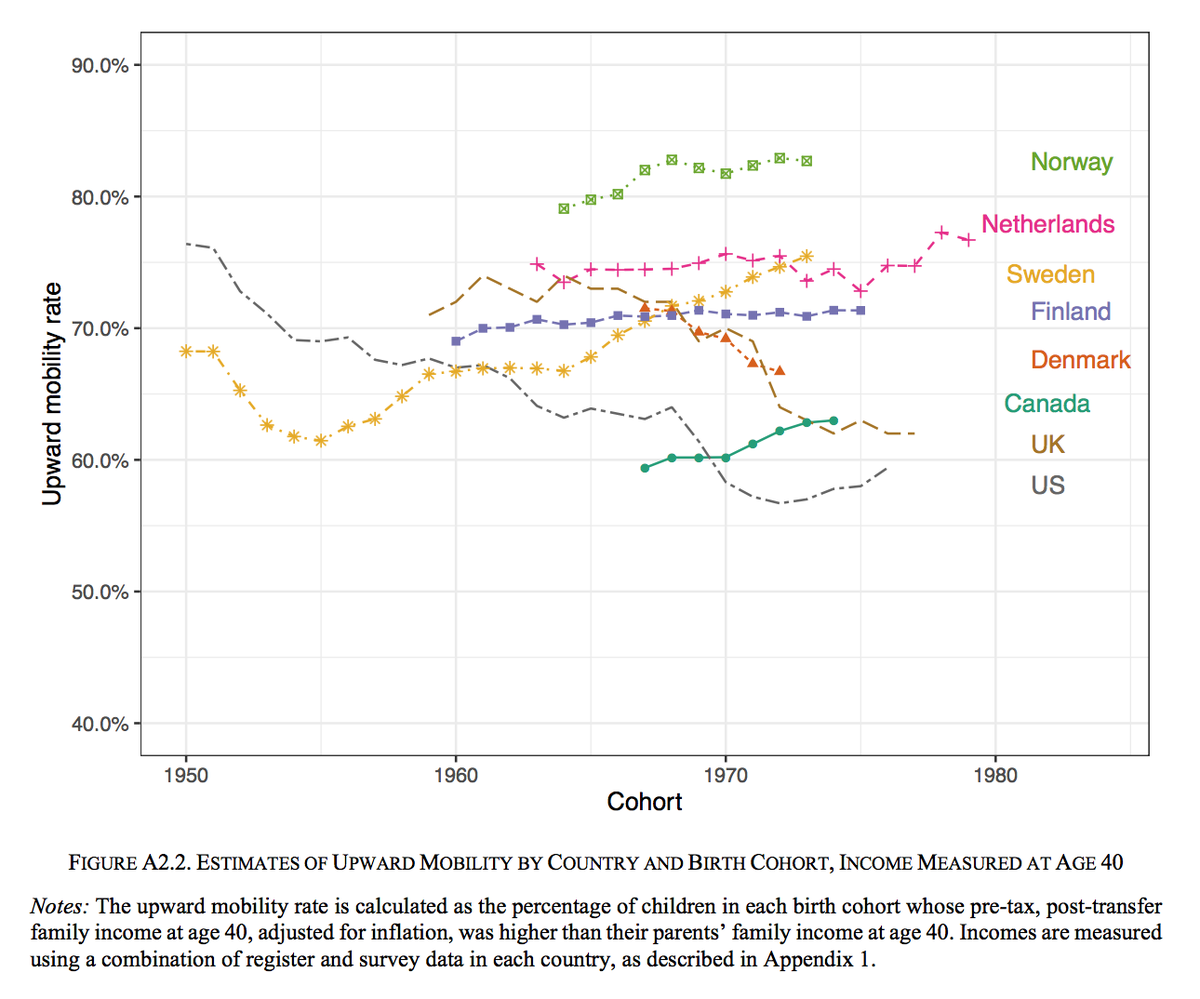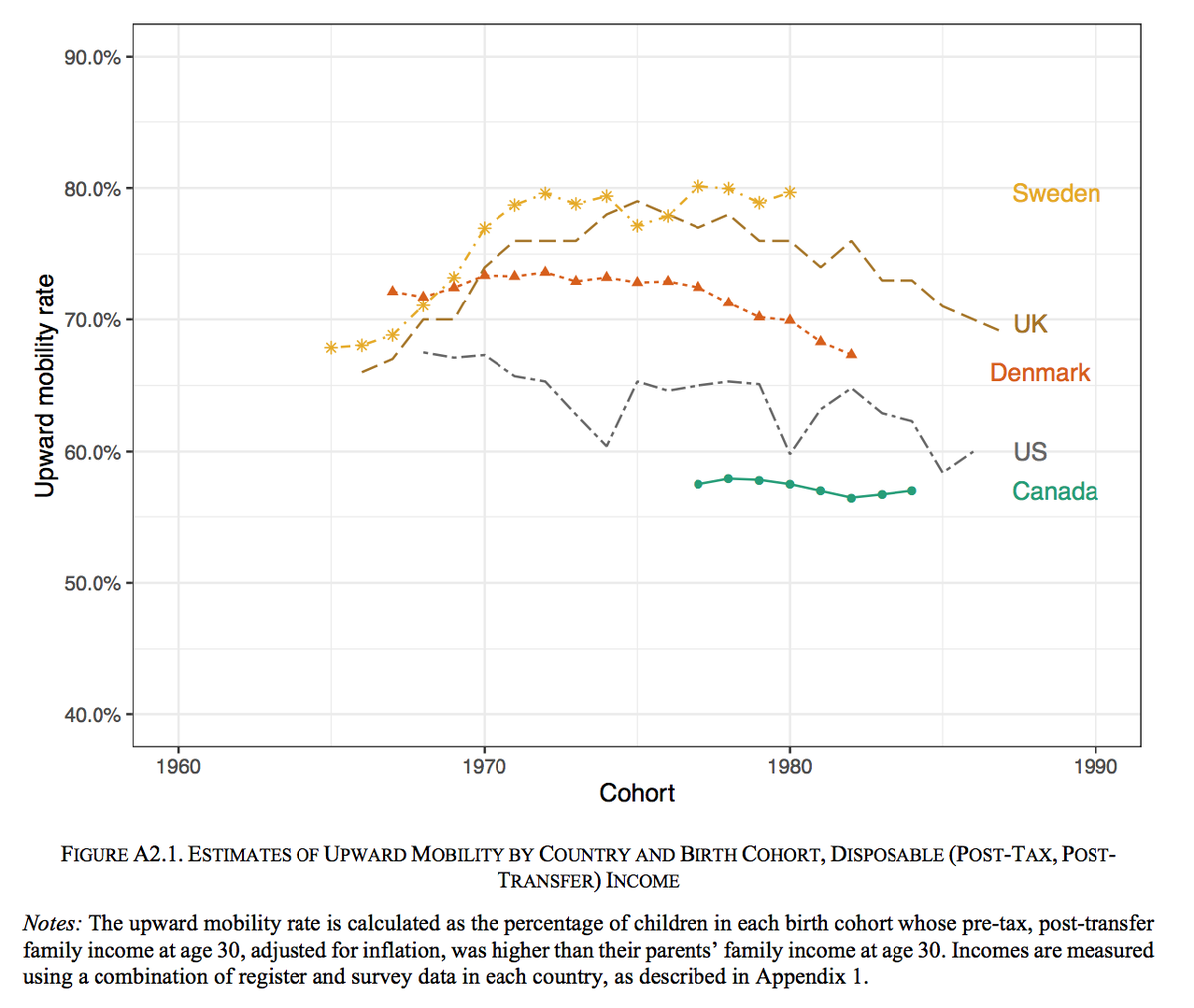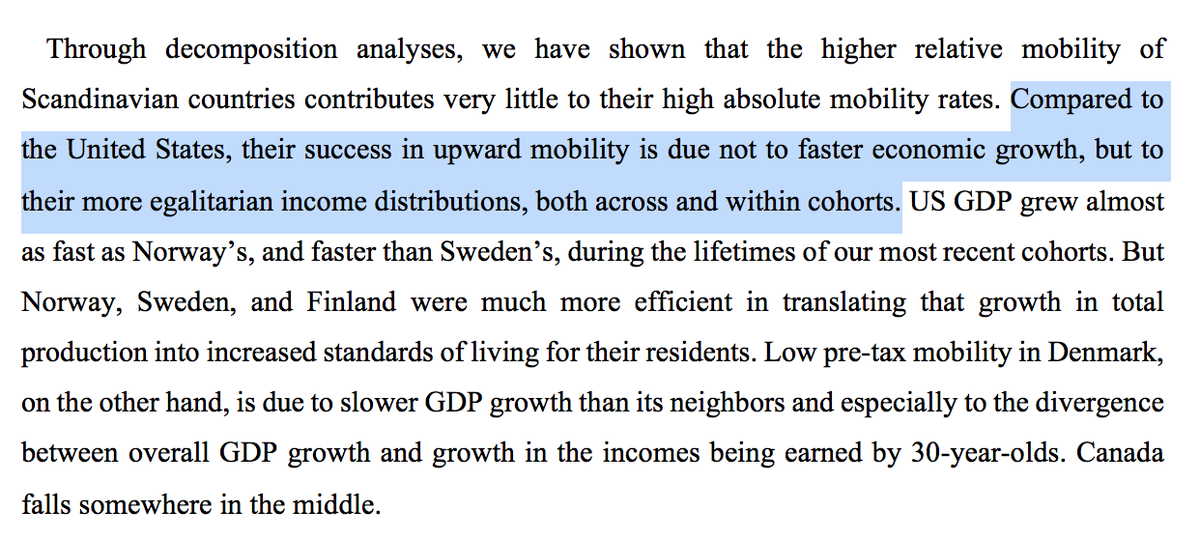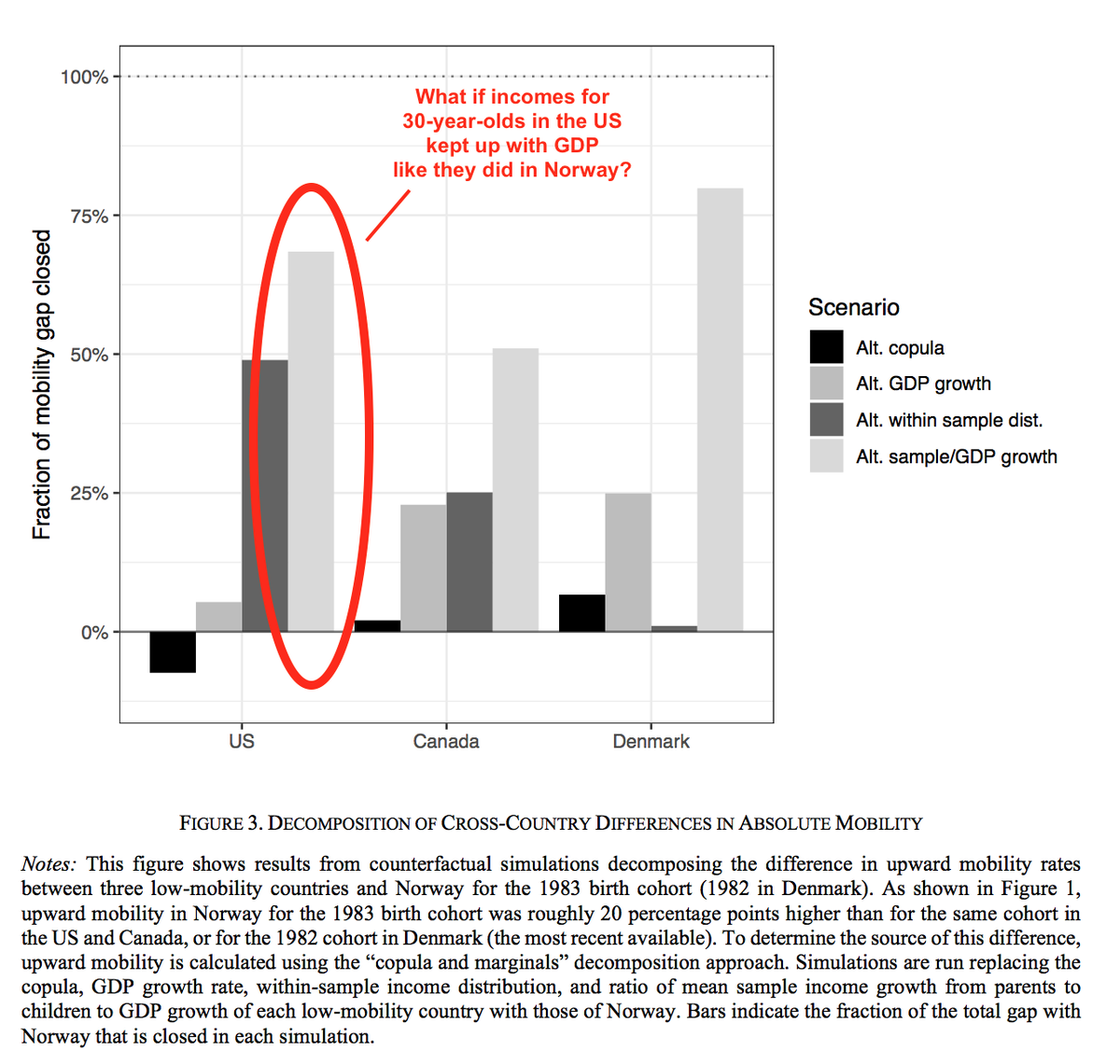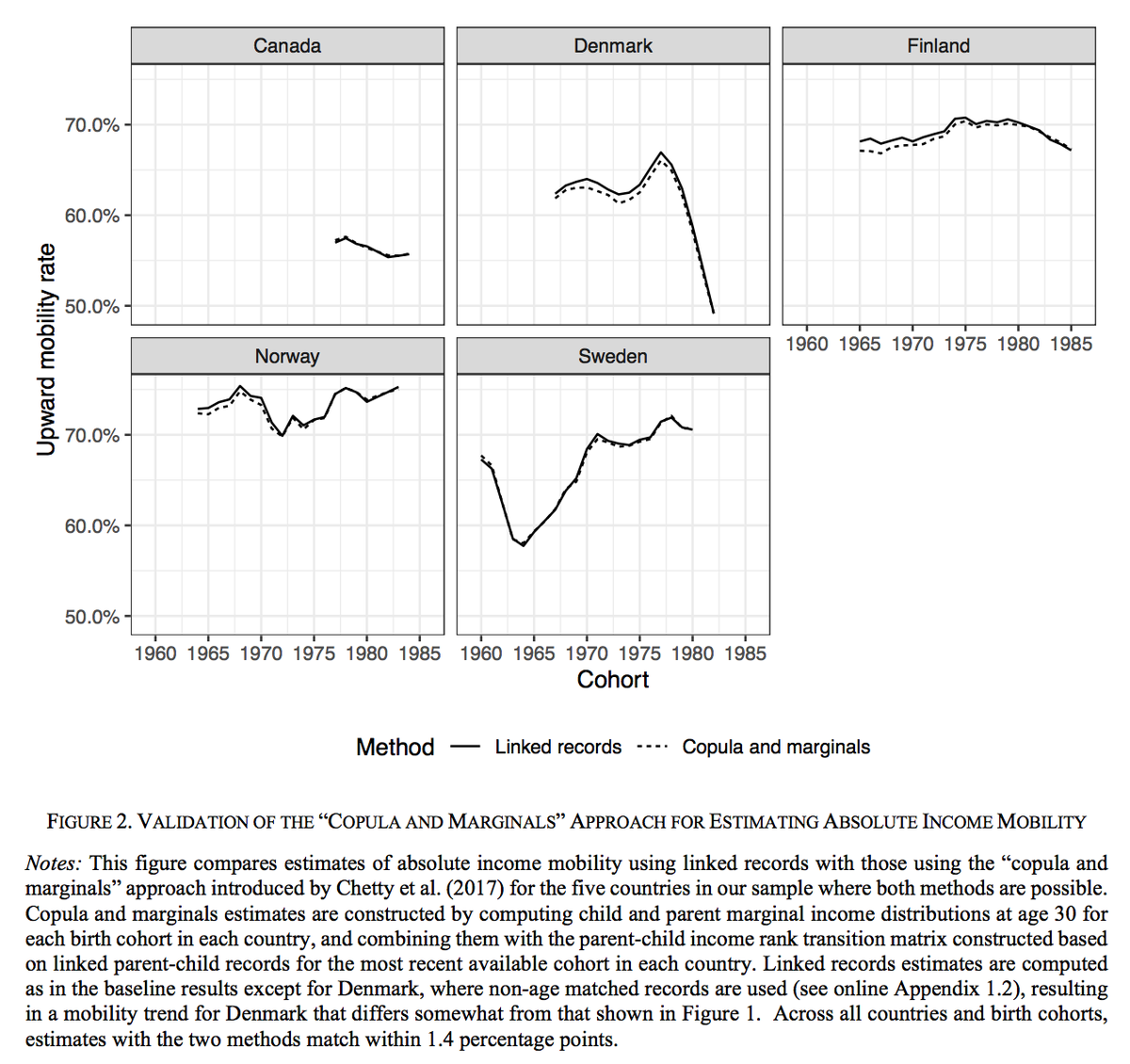New working paper: "Trends in Absolute Income Mobility in North America and Europe." Joint with @maximilian_hell @MNybom @JoBlanden @OutiSirnio @adrianadermon @s_machin_ @RSumaiya @martindmunk @anne_c_gielen + 4 co-authors not on Twitter
https://www.iza.org/publications/dp/13456/trends-in-absolute-income-mobility-in-north-america-and-europe">https://www.iza.org/publicati...
https://www.iza.org/publications/dp/13456/trends-in-absolute-income-mobility-in-north-america-and-europe">https://www.iza.org/publicati...
In 2017, @maximilian_hell & I showed (w/ @OppInsights @davidgrusky et al.) that the fraction of US kids who grow up to earn more than their parents at age 30 has fallen dramatically: from 90% of the 1940 birth cohort to just 50% of kids born in the 1980s. https://science.sciencemag.org/content/356/6336/398/tab-article-info">https://science.sciencemag.org/content/3...
This decline in upward absolute income mobility, we argued, is a key driver of the perception that the American Dream is slipping away.
https://theconversation.com/is-the-american-dream-dead-57095">https://theconversation.com/is-the-am...
https://theconversation.com/is-the-american-dream-dead-57095">https://theconversation.com/is-the-am...
Now, we ask whether the US is unique in its declining upward mobility. Is the American Dream still alive in other countries?
To answer this question, we gathered administrative and survey data for 8 countries: Canada, Denmark, Finland, the Netherlands, Norway, Sweden, the UK, and the US. These were all the countries for which we could obtain at least 30 years of linked parent-child records.
It turns out that the “American Dream” lives on--in Europe. Currently, about 70% of 30-year-olds in several European countries out-earn their parents. In the US, we haven& #39;t seen rates like that since 1961.
The same general finding holds if you measure income at age 40 rather than age 30: the US has seen a steeper decline in upward mobility and has lower rates today than peer countries
Interestingly, the US isn’t alone in its low absolute mobility. We see the same rates in Canada for the few cohorts where we have data. Denmark& #39;s mobility dropped sharply after the 2008 financial crisis, and is now is even lower than in the US.
Denmark is interesting because in *post-tax* income, mobility has stayed pretty high. (We use pre-tax income in our main analysis because that& #39;s what& #39;s available in several other countries, even though post-tax is generally a better approximation of true living standards.)
The big question: Why do places like Norway and Finland have so much more upward mobility than the US? We find: it& #39;s not that their economies have grown faster. It’s that they have less inequality, so their economic growth translates into rising living standards for everyone.
Specifically, incomes for 30-year-olds in Norway have mostly kept up with GDP growth. Not so in the United States. This alone accounts for about 70% of the mobility gap between Norway and the US.
So the US is unusual—but not unique—among rich countries in how little upward mobility kids experience.
Why? It& #39;s not that our economy has slowed down, it’s that all the growth has gone to the 1% (see chart by @DLeonhardt @gabriel_zucman @PikettyLeMonde) https://www.nytimes.com/interactive/2017/08/07/opinion/leonhardt-income-inequality.html?src=me&_r=0">https://www.nytimes.com/interacti...
Why? It& #39;s not that our economy has slowed down, it’s that all the growth has gone to the 1% (see chart by @DLeonhardt @gabriel_zucman @PikettyLeMonde) https://www.nytimes.com/interactive/2017/08/07/opinion/leonhardt-income-inequality.html?src=me&_r=0">https://www.nytimes.com/interacti...
For those interested in methods, we’ve got a couple of technical contributions. First, we show how five components fully capture the upward mobility diff between any two countries: GDP growth, sample income to GDP ratio, ineq. for parents, ineq. for kids, and relative mobility.
2nd, we validated the method from our original paper for estimating US mobility rates without linked parent-child data. For 5 countries, we checked our "copula and marginals" approach against the true mobility rate comparing parents and kids. They match almost exactly.
That’s what we expected based on the math, but it’s still good to see!
Check out the full paper for details: http://ftp.iza.org/dp13456.pdf .">https://ftp.iza.org/dp13456.p...
This is still a working paper, so feedback + suggestions are appreciated!
This is still a working paper, so feedback + suggestions are appreciated!

 Read on Twitter
Read on Twitter